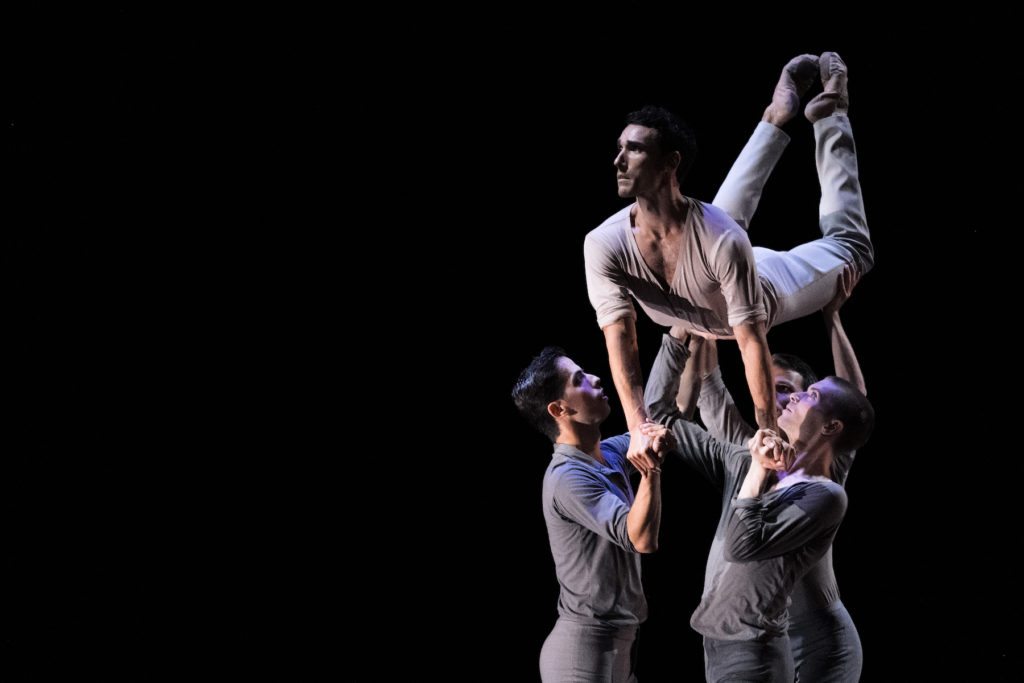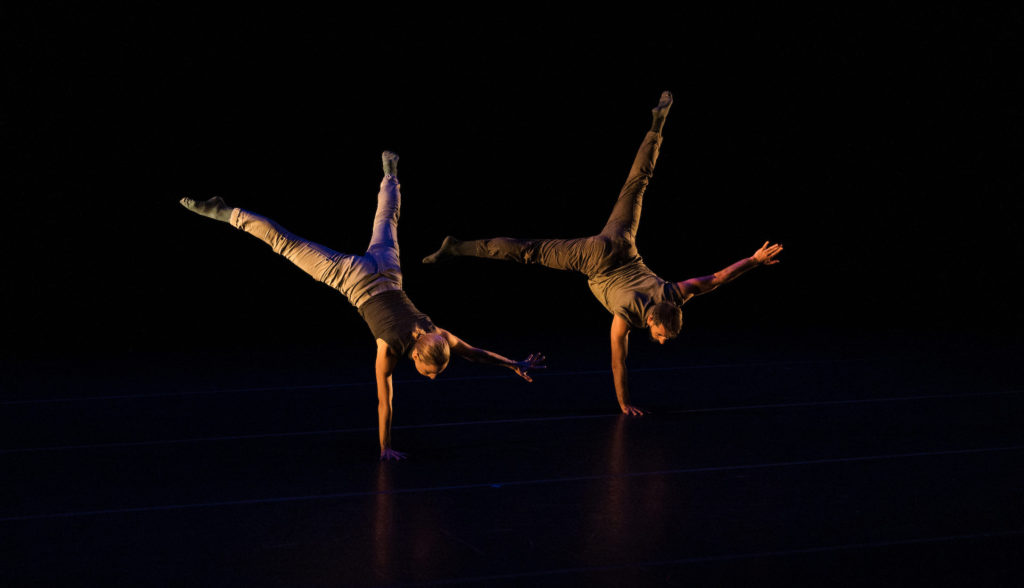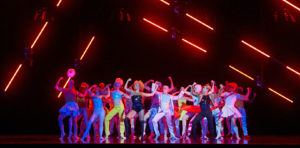Montreal’s fall flurry - Vancouver Ballet Society
- Home
- City Reports 2020 - 2023
- Montreal’s fall flurry

By Victor Swoboda
As part of the 20th anniversary of Festival Quartiers Danse, Malandain Ballet Biarritz staged Nocturnes at the Wilder Building’s Studio-Theatre. Intrigued by the darker side of Chopin’s music, company founder/choreographer Thierry Malandain moved his dancers along a narrow strip amid a pervasive gloom, an arrangement that, according to program notes, recalled medieval “funeral dances.” To me, the work’s duets and trios, which featured many leg extensions and balletic skill, showed people aching for romance, finding and then losing love because of rivalry or caprice.

The double bill also featured Reset, a compelling duet by Montrealer Véronique Giasson. To a gently rumbling soundscape, Laurent Le Gall made simple arm movements that partner Giasson repeated. Soon the gestures gained amplitude, the strict parallelism waned, and the two moved about freely. Joining together, the pair wove intricate body shapes followed by a return to less tense parallel moves. This dramatic pattern repeated throughout the piece, which brightened toward the end at a piano’s tinkling. Methodically the pair returned to their opening side-by-side stance, ready to “reset.”

In the festival’s closing anniversary show — another double bill at the Studio-Theatre — Dirt, by Montreal’s Tentacle Tribe, again showed the urban-dance-inspired prowess of its three male and one female dancers. The movement flowed relentlessly in complex body-to-body choreography requiring the most acute sense of one’s centre of gravity. This was especially true in a tightly woven duet in which choreographer Elon Höglund and Amara Barner repeatedly rolled over and under each other, creating an intimate meeting of equals. Höglund inserted more acrobatic moves than in past works, generating audience gasps, as when he executed a full flip at speed while staying true to the subtle rhythmic soundscape.

The bill’s opening piece was by Montrealer Pauline Gervais for Pauline Berndsen Danse, a contemporary group she founded in 2018. In MMXX, five dancers in black bodysuits initially moved stiffly like robots to pop music choruses, never touching. Eventually movements softened, physical contact was initiated, and relationships developed as Enrico Caruso sang an aria of romantic hope, Una furtiva lagrima. Then, rather pessimistically, everyone reverted to their primal robotic state. Why everyone moved from isolation to connectedness and back again was a key unanswered question.
Presented by Danse Danse, MOI—Momentum of Isolation, by Shay Kuebler of Vancouver-based Radical System Art, featured Kuebler as a pencil-pusher reaching for techno gadgets to escape office humdrum. Wearing a jacket attached to long cords, he was pulled fiercely back and forth across the wide stage of the Wilder Building’s Studio-Theatre under wonderfully arranged bright shafts of light. A group of men and women entered, frolicking in masterful choreography that brought them into densely interacting movements. A delightful scene featured five suitors on chairs in a circle who nimbly switched places to woo a fickle woman seated apart. Halfway through, however, the work lost focus. Signature-style elements of fellow Vancouverite Crystal Pite popped up in a scene featuring lip-synching to a recorded voice and puppets manipulated with sticks handled by a black-clad puppeteer. Splendidly done, these scenes nevertheless seemed kidnapped. The ending of Kuebler’s rich but uneven work — touring Canada and the U.S. until December 21 — had him pining alone over a hand-held flower.

Virtual reality glasses were worn by Don José in French choreographer Etienne Béchard’s radical take on Carmen for Les Grands Ballets Canadiens in Salle Wilfrid Pelletier at Place des Arts. VR glasses on, Don José envisioned scenes in which he and Carmen became avatars of each other, while Carmen’s lover, the Toreador, and Don José’s sweetheart, Micaëla, underwent their own virtual reality switch. The identity-switch plot was confusing, but the riotous colour, vigorous choreography, and Bizet’s music played live made a highly theatrical impact.
Predictably flashy in his show, Intimo, at Place des Arts, star flamenco dancer Farruquito revealed a regrettable new habit of ending numbers with a flourish that too obviously played for applause. Deeper artistry came from Farruquito’s mother, Rosario Montoya Manzano, “La Farruca,” who matched him in duets and outdid him in solos that exploited her relaxed carriage, limpid hands, and clear footwork. Farruquito was at his charismatic best at show’s end when he interacted with musicians and surprised all by skillfully playing the guitar.
The annual two-week Arab World Festival ended with Harem at Place des Arts starring two charismatic male dancers, Turkish-born Ilhan Karabacak and Iranian-born, Paris-based Shahrokh Moshkin-Ghalam performing with Lebanese-born Montreal dancer Chanel Cheiban. Outstanding was a male duet contrasting Karabacak’s seductive sinuousness with Moshkin-Ghalam’s precisely sculptured lines.
The most exciting movement sequence this fall was a group juggling number in Mon île, mon coeur (My Island, My Heart) by Les Sept Doigts, who combine theatre, dance, and circus. Performing at the new cabaret stage at Théâtre St. Denis on a set representing a low-rent Montreal apartment, performers on the run hurled and caught objects flying across the stage in several directions simultaneously. Astounding!

